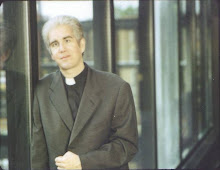From Craig A. Satterlee, When God Speaks through Worship: Stories Congregations Live By (Herndon, VA: The Alban Institute, 2009), pp. 82-83
At St. Timothy’s Church, we celebrated All Saints’ Sunday by lighting candles. For a congregation whose membership was shrinking, some observers might say that the congregation was dying, finding ways to remember those who gave their lives to the church became increasingly important. People were aware that they might lose their connection to their history and to deceased loved ones who were church members. They wanted to do something more than read the names of those who died in the past year. We decided to remember everyone that anyone wanted remembered. As we prayed the names of those who had died, either a loved one or the person who submitted the name came forward and lit a votive candle placed on the altar. By the time we were finished naming the names, the altar was symbolically ablaze with the light of those saints who, although they have parted from us, continue to share Christ’s table with us. Standing at the altar to celebrate the Lord’s Supper, I was aware of the communion of saints, that great “cloud of witnesses” (Hebrews 12:1), which surrounds us and whose lives brighten our path as we walk through this world by faith.
The light of those candles reflected the light of Christ’s resurrection by reminding us that Christ’s table has one end here on earth and one end in heaven, or one end in this world and the other in the world to come. Even though people move from one end of the table to the other, they remain at Christ’s table with us. In the Eucharistic meal, God joins us with saints of every time and of every place. When we receive the bread and the wine, we sit at the same table with biblical biggies, with loved ones who have gone before us, saints who will come after us, and with Christians of all nations and denominations. The barriers of time and space, life and death are broken as this taste of the Kingdom of God breaks into our world and into our lives. God gives us a real and delicious foretaste of the feast to come. God provides a hint of what the fulfillment of the kingdom of God will be like, when the pains of this world are destroyed and we live forever with God and those we love. At Christ’s table, we bridge the distance between life and death. We traverse the gulf between this world and the next as we participate in God's own life by eating the risen Christ’s body and drinking his blood. In Holy Communion, heaven and earth are united; death and life become one as we sit at the banquet table of God's kingdom with Jesus and all the saints.
Our experience at the table with Jesus and the saints made things clearer for the people of St. Timothy. We could assume that Jesus loves us and not that he was angry or disappointed that our congregation was shrinking. We could expect to live with Jesus forever, regardless of what the future brings, because our fate was finished lovingly on the cross. And so what we do on Sunday, hearing the word and sharing the meal, is a foretaste, an appetizer of the banquet described by the prophet Isaiah, when the Lord of hosts will make for all peoples a feast of rich foods and well-aged wines. And God will destroy the shroud that is over all peoples, and swallow up death forever, and wipe away the tears from all faces. Those who lit the candles those All Saints’ Sundays, and we who watched the candles as they were lit, both received and shared this light of the risen Christ.
Monday, October 26, 2009
Subscribe to:
Post Comments (Atom)

No comments:
Post a Comment